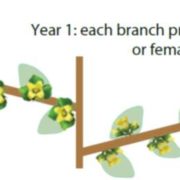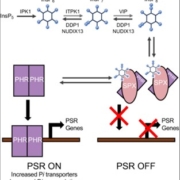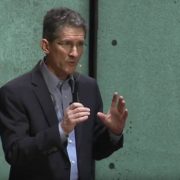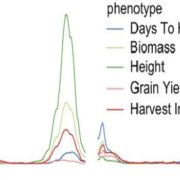Sealing the deal to graft healing: PAT1 as a novel regulator of graft formation
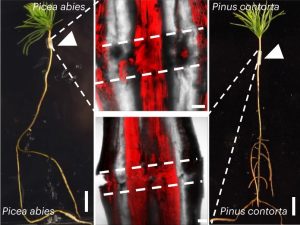 Grafting is a way to combine the desirable properties of two plants by joining the scions and rootstocks from different plants. While frequently practiced, little is known about how grafting within and between coniferous species works. Most pertinently, grafting success relies on how efficiently connected vasculatures can heal at the graft junction. Precisely, this is what Feng et al. have demonstrated in their article. To observe graft healing dynamics, the authors developed a new micrografting technique that allows successful grafting between young tissues of divergent conifer species, which was previously inhibited by graft incompatibility. By performing RNA sequencing on intact and grafted Norway Spruce (Picea abies), the authors were able to identify an upregulated gene, PHYTOCHROME A SIGNAL TRANSDUCTION 1 (PAT1), common to Arabidopsis and P. abies, using transcriptomic data of Arabidopsis during graft formation. Congruent to this finding, both complementation and overexpression of PaPAT1 in Arabidopsis facilitated graft attachment and callus formation, respectively, whereas loss-of-function PAT mutants are defective in phloem reattachment. These findings reaffirmed the relevance of PAT1 and its orthologs in regulating graft healing in seed plants. (Summary by Marvin Jin @MarvinJYS) Nat. Plants 10.1038/s41477-023-01568-w
Grafting is a way to combine the desirable properties of two plants by joining the scions and rootstocks from different plants. While frequently practiced, little is known about how grafting within and between coniferous species works. Most pertinently, grafting success relies on how efficiently connected vasculatures can heal at the graft junction. Precisely, this is what Feng et al. have demonstrated in their article. To observe graft healing dynamics, the authors developed a new micrografting technique that allows successful grafting between young tissues of divergent conifer species, which was previously inhibited by graft incompatibility. By performing RNA sequencing on intact and grafted Norway Spruce (Picea abies), the authors were able to identify an upregulated gene, PHYTOCHROME A SIGNAL TRANSDUCTION 1 (PAT1), common to Arabidopsis and P. abies, using transcriptomic data of Arabidopsis during graft formation. Congruent to this finding, both complementation and overexpression of PaPAT1 in Arabidopsis facilitated graft attachment and callus formation, respectively, whereas loss-of-function PAT mutants are defective in phloem reattachment. These findings reaffirmed the relevance of PAT1 and its orthologs in regulating graft healing in seed plants. (Summary by Marvin Jin @MarvinJYS) Nat. Plants 10.1038/s41477-023-01568-w


